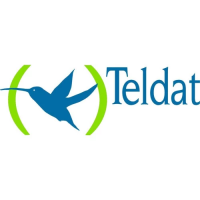1. Description
UMTS mobile technology
UMTS technology (Universal Mobile Telecommunications System) is the terminology used in
Europe when referring to Third Generation mobile services and networks.
This permits data transmission at a maximum speed of 384 Kbps, theoretically better than ISDN and
standard ADSL lines. Compared with current mobile technology, this can operate eight times faster
than GPRS and forty times faster than GSM.
The main advance here is the WCDMA technology (Wide Code Division Multiple Access) inherited
from military technology, in contrast to GSM and GPRS which use a mixture of FDMA (Frequency
Division Multiple Access) and TDMA (Time Division Multiple Access). The principal advantage of
WCDMA lies in the fact that the signal expands in frequency thanks to an expansion code only known
to the transmitter and the receiver.
This form of modulation has numerous advantages:
• High transmission speeds, by using the whole spectrum.
• High security and confidentiality, due to the use of techniques that come nearer using the
maximum channel capacity. (E.g. convolutional encoders).
• Maximum multiple access effectiveness, while hop sequences do not coincide.
• High interference resistance.
Main characteristics
This technology is suitable for a wide variety of users and services, not just for advanced users, UMTS
offers the following:
• User friendly and economic: UMTS provides easy to use and adaptable services.
• New and better services: Users can demand high quality voice services from UMTS as well as
data and information services.
• Fast access: The main advantage of UMTS compared to the mobile second generation (2G) is
the capability to support high data transmission speeds, up to 144 Kbps over high speed
mediums, 384 Kbps in open outlying areas and 2 Mbps where there is reduced mobility
(inside buildings). This capacity added to inherited support from Internet Protocol (IP),
powerfully combine to provide interactive multimedia services and new broadband
applications.
• Data packet transmission and data transference speed on demand: UMTS offers transmission
of data in packets and over high speed switch circuits due to the virtual connectivity in the
network at all times and the alternative billing methods (e.g. pay per byte, by session, flat rate,
asymmetric broadband for ascending / descending link) according to the needs of the various
data transmission services which are emerging.
UMTS network structure
This is made up of two large subnets: the telecommunications network and the management network.
The first aims to sustain the transfer of information between connection ends. The second network’s
task is to provide the means for billing and rates for the subscribers, the registration and definition of
the service profiles, management and security for data handling. It also handles network elements
operation with the aim of ensuring this functions correctly and for detection and resolution of
breakdown and abnormalities or recuperation of operations after periods where this is off or some of
the elements have disconnected.
TELDAT ROUTER– UMTS Introduction
I - 2
Doc.DM757-I
Rev.10.60

